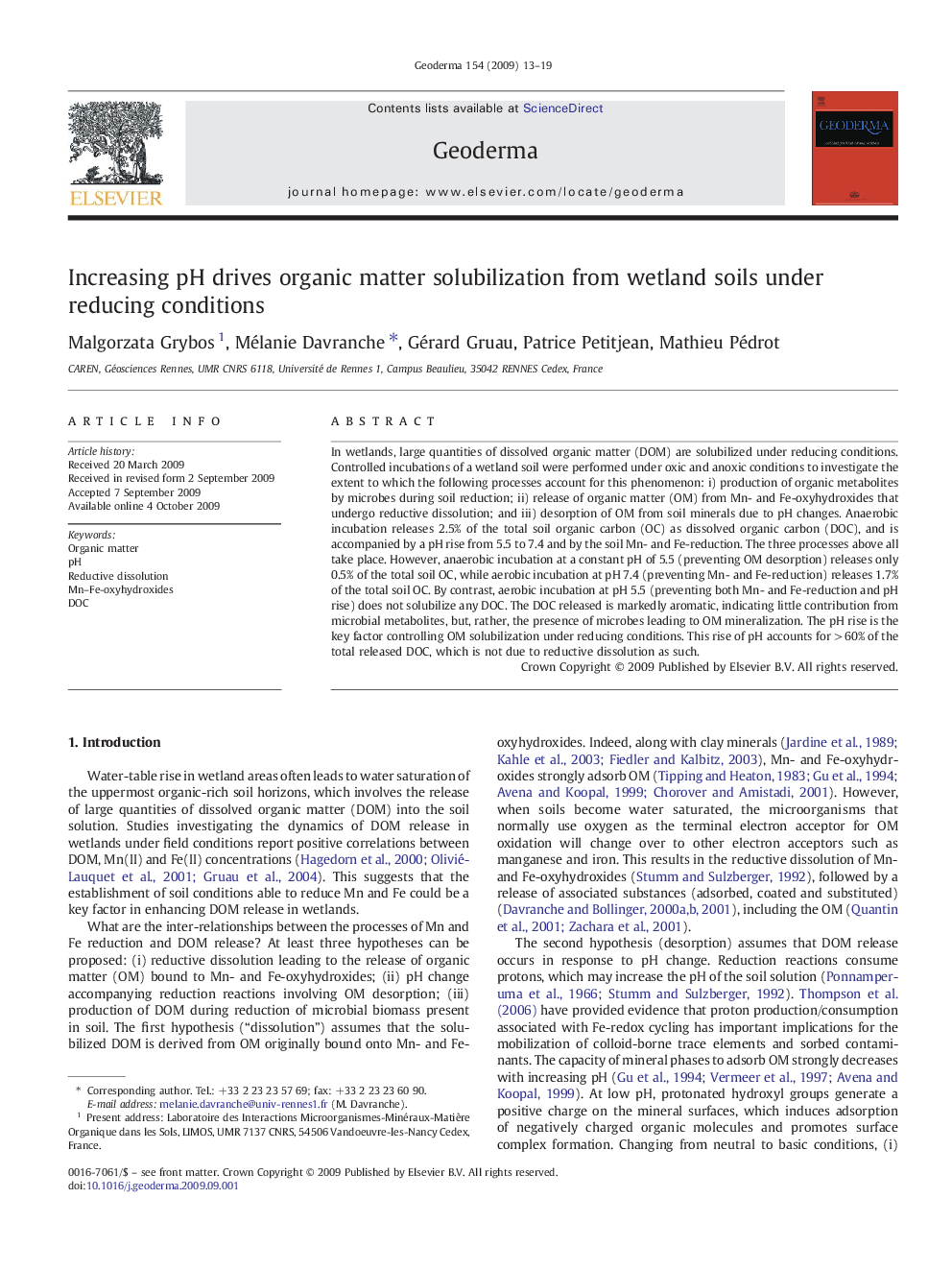| Article ID | Journal | Published Year | Pages | File Type |
|---|---|---|---|---|
| 4574418 | Geoderma | 2009 | 7 Pages |
In wetlands, large quantities of dissolved organic matter (DOM) are solubilized under reducing conditions. Controlled incubations of a wetland soil were performed under oxic and anoxic conditions to investigate the extent to which the following processes account for this phenomenon: i) production of organic metabolites by microbes during soil reduction; ii) release of organic matter (OM) from Mn- and Fe-oxyhydroxides that undergo reductive dissolution; and iii) desorption of OM from soil minerals due to pH changes. Anaerobic incubation releases 2.5% of the total soil organic carbon (OC) as dissolved organic carbon (DOC), and is accompanied by a pH rise from 5.5 to 7.4 and by the soil Mn- and Fe-reduction. The three processes above all take place. However, anaerobic incubation at a constant pH of 5.5 (preventing OM desorption) releases only 0.5% of the total soil OC, while aerobic incubation at pH 7.4 (preventing Mn- and Fe-reduction) releases 1.7% of the total soil OC. By contrast, aerobic incubation at pH 5.5 (preventing both Mn- and Fe-reduction and pH rise) does not solubilize any DOC. The DOC released is markedly aromatic, indicating little contribution from microbial metabolites, but, rather, the presence of microbes leading to OM mineralization. The pH rise is the key factor controlling OM solubilization under reducing conditions. This rise of pH accounts for > 60% of the total released DOC, which is not due to reductive dissolution as such.
